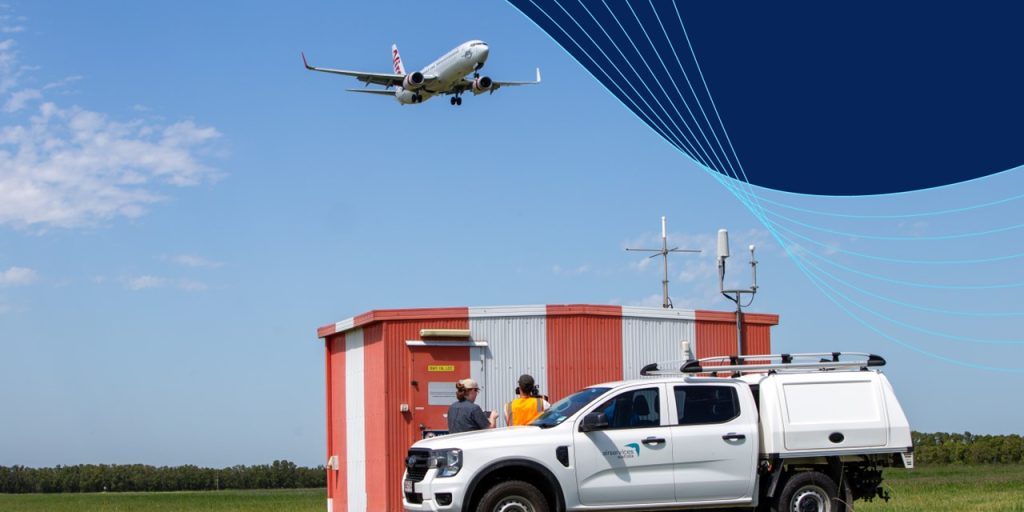Forging a career as an air traffic controller takes great self-discipline, confident decision making and the ability to perform under pressure – just ask razor-sharp 88-year-old veteran John Bowing – who still works out daily to keep in tip-top shape.
“I’m 25,” he quipped. “I’ve got an old wind-resistant exercise bike at home and do floor exercises every day – I don’t do it for anybody but myself.”
John, an Airservices Australia air traffic controller at the original Sydney tower from the 1960s, enjoyed a stellar 25-year aviation career following a 15-year stint in the Royal Navy.
Airservices Australia recently welcomed John back to his old stomping ground (pictured) to reminisce and boost his spirits after the devastating loss of his beloved wife of 66 years, Winsome, with whom he shared three adult children.
His aviation career began after he and his family embarked on an arduous six-week ship journey from England to Australia in 1965 in search of a better life, with John first becoming an air traffic controller aged 30.
Stoic and humble, John’s passionate about the rigours and excitement of sitting academic exams to become a controller. He also reflected on how aviation technologies have evolved over the years, enabling pilots and air traffic control to leverage new capabilities which underscore Australia’s reputation as a leader in aviation safety.
“Our air traffic technology in those days was practically third world compared to that used by today’s controllers,” he said. “We had no radar once you were at 160 miles out of Sydney, but you just learnt to bend with the breeze.
“I was always fascinated by aviation, particularly World War II aircraft. I absolutely loved my job and took great pride in it. One of my supervisors used to refer to me as the ‘doyen of the southern skies’.
“I got to work from the best office in Sydney with 360-degree views of the city.”
John had these pearls of wisdom for next-generation controllers about what they’ll need to perform at their best.
“You’ve got to really want to do it,” he said, “If you feel in your heart of hearts that you’re cut out for it, it can lead to such a satisfying job that you don’t have to take home with you.
“But you’ve got people’s lives in your hands, so you need to have a lot of focus and to do the job by the book.
“Being an air traffic controller gave me a great, happy life.”
Airservices Australia is responsible for the safe and efficient management of 11% of the world’s airspace and the provision of aviation rescue fire-fighting services at Australia’s busiest airports. We connect people with their world safely – linking family and friends, generating economic activity, creating jobs and facilitating trade and tourism.
For more information visit www.airservicesaustralia.com.
Popular searches
Veteran air traffic controller shares secrets to success
Posted on: December 2, 2021
Posted in Air traffic management, Feature Story
More news
Related topics
Airservices provides safe, secure, efficient and environmentally responsible services to the aviation industry.
Airservices Australia Releases November Australian Aviation Network Overview
Airservices Australia has released its Australian Aviation Network Overview report for November 2025. Highlights include: About AirservicesAirservices Australia is a government-owned organisation responsible for safely and efficiently managing air traffic in 11 per cent of the world’s airspace, as well as the provision of aviation rescue fire fighting services at Australia’s busiest airports. We are regulated […]
Airservices Australia and Airways New Zealand strengthen coordination on aviation safety, innovation and resilience
Airservices Australia and Airways New Zealand have signed a Memorandum of Understanding (MOU) to enhance collaboration across air traffic management, operational resilience and regional coordination. The agreement, signed at the Civil Air Navigation Services Organisation (CANSO) Airspace Asia Pacific conference this week, establishes a framework for enhanced cooperation in operational contingency planning, innovation in air […]
Airservices Australia ready to guide Santa this Christmas
It’s go-time for Santa Claus’ magical mission, with Airservices Australia’s official Santa Flight Management Team gearing up to provide 24/7 flightpath tracking to guide Jolly Old Saint Nick and his reindeer to safety this Christmas. Airservices’ national network of 3700 professionals – led by our highly skilled and passionate air traffic controllers (ATCs), engineers, technicians […]
Airservices Australia invites feedback on Sunshine Coast Airport Post Implementation Review improvement actions
Airservices Australia is today calling on the community and industry to provide feedback on the first actions of the Post Implementation Review (PIR) for airspace and flightpath changes implemented at Sunshine Coast Airport in 2020. Online engagement sessions will be held on 26 and 27 November. Booking are essential via here. The PIR, which was […]



